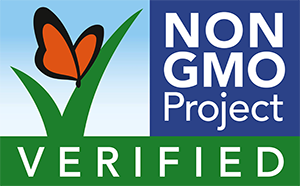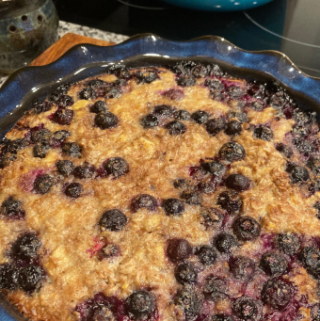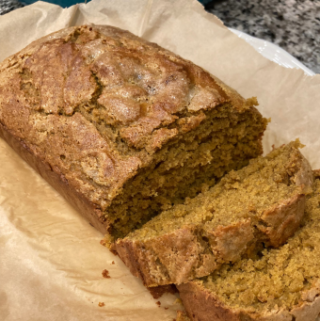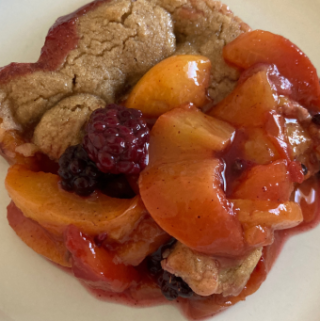
This post is the second in the “Better Than” series. We first looked at “Better Than” Meat Choices. This series is based on the idea that our American food chain has become quite complex. There are so many choices at the grocery store. I hope that these posts will help to demystify the terminology found on food packaging. The truth is, some food choices are better than others. In order to make a “better than choice, we have to understand what we’re looking at when we go to the grocery store. A little education goes a long way in terms of being an informed consumer. So let’s move on with lesson two in this series: “Better Than” Produce Choices.
HOW TO READ PRODUCE LABELS
The number on a produce sticker is called a PLU (Price Look Up) code. They’ve been around since 1990 when barcodes began to be used for point of sale transactions. Some are regulated by the International Federation of Produce Standards, meaning the same numbers are used around the world. The United States also has some numbers that represent foods only grown in the US.
A PLU code will either be a four or five digit number. Conventionally grown fruits and vegetables are labeled with a four digit number in the 3000 or 4000 series. Organic fruits and vegetables are labeled with a five digit number. You will find a 9 in front of the 3000 or 4000 series. As an example, a honey crisp apple is coded 3283. An organic honey crisp apple is coded 93283.
APEEL
There’s a new produce sticker you may have seen at the grocery store. Apeel is a produce coating, a skin, that is now being applied to some produce. According to its own website, Apeel “gives the supply chain more time” by keeping “produce fresh for longer.” The coating accomplishes this with a “plant-based protection” that slows water loss and oxidation…the things that generally lead to food rot.

Apeel does have its own sticker, but there is currently no requirement that Apeel foods be labeled in the grocery store. Foods most commonly coated in Apeel in North America are avocados, English cucumbers, and limes. Apeel has also been approved for use on apples, even organic apples, though the latter “approval” is suspect as Apeel was approved as a “fungicide” rather than a “food protectant.” This may need to be revisited by the gate-keeping authorities.
This tool will show you which retailers around you are selling products with an Apeel coating on them. It not only lists the stores, but the products that hold the coating. Some stores, like Natural Grocers, have promised never to carry food with this coating.
Why might you want to avoid Apeel? Apeel has not disclosed all ingredients used to make this coating. They only reference “mono and triglycerides derived from plant material.” In Apeel’s “Generally Recognized as Safe” notice, submitted to the Office of Food Additive Safety, it acknowledges that its food coatings may have residues including ethyl acetate, heptane, palladium, arsenic, lead, cadmium, and mercury. Because these were registered under the FDA’s legal limit, Apeel has been allowed to continue production.
CONVENTIONAL PRODUCE
Conventional produce in America is grown using synthetic fertilizers and pesticides, including the ever talked about Glyphosate, or Round Up by Monsanto. Glyphosate is a non-selective herbicide used for controlling multiple species of weeds. It has been used in commercial agriculture since the 1970s. This is just one example of a product used in the American food chain that raises big concerns. Glyphosate has been banned in Mexico, Germany, Argentina, Australia, Denmark, most of Canada, and many other countries around the world. Thousands of lawsuits have been filed against the manufacturer as Glyphosate has been linked to a dramatic increase in non-Hodgkin’s lymphoma.
Personally, the more I learn about conventional practices in America, the more I lose faith in our Food and Drug Administration. They continue to approve the use of products that other countries have deemed unsafe. If I could afford to unplug from the entire industry of conventional produce, I would do so.

ORGANIC PRODUCE
Produce labeled as “organic” must be grown without synthetic fertilizers or pesticides. Green manure, livestock compost, or compost can all be used to improve the quality of the soil. Ground soil must be free from synthetic products for three years before growing an organic crop. The use of predatory insects or insect traps are common pest control methods.
Generally speaking, organic produce is more environmentally friendly. Pollutants are reduced. Soil fertility is emphasized and boosted. People and animals living in close proximity to organic farms benefit from the absence of synthetic pesticides and herbicides.
While I believe organic food to be a better choice than conventionally grown produce, this option still has its flaws, as we’ll see when we get to “The Problem With America’s Food Chain.” “Better Than” Produce Choices are sometimes hard to make.
GMO (GENETICALLY MODIFIED ORGANISM) PRODUCE
Currently, in America, there are only eleven crops approved for GMO production and distribution. A majority of these crops (namely corn, soy, and alfalfa) are used as animal feed. Other GMO crops are used in the production of packaged foods. 60% of the processed foods in America are made with GMO ingredients. The eleven GMO crops in America are:
- corn
- soybeans
- cotton
- potatoes
- papayas
- summer squash
- canola (rapeseed)
- alfalfa
- apples
- sugar beets
- pink pineapples
To create a GMO food, genes from one plant or species are transferred into the genome of another plant or species. This is done in an effort to create plants that are more resistant to insects and herbicides. These genetic mutations can create new proteins that may trigger allergic reactions or autoimmune activity in humans. It’s thought that our immune systems may not recognize the altered genome, and thus launch an attack against the unknown proteins. There should be more research on this topic. Most of the studies that tout the safety of GMO foods are funded or otherwise completed by the biotechnology companies who commercialize GMO plants.

There is one thing to note here before moving on. You may have seen the “Non-GMO Project Verified” sticker at the grocery store. This organization verifies that the food labeled has not been produced from GMO crops. Sometimes you’ll see this label on blueberries or grapes or green beans. The food distributor paid extra to have that label on the product, so you as the consumer are paying extra for that verification. The thing is, blueberries and grapes and green beans are not GMO allowed products in America. Know the eleven GMO crops. Don’t be pulled in by unnecessary labeling that ultimately costs you money.



NOT A GMO PRODUCT
THE PROBLEM WITH AMERICA’S FOOD CHAIN
Even if you can afford to purchase Apeel-free, organic, non-GMO produce, you’re still a consumer bound to the dysfunction of the American food chain. Before the advent of the supermarket, people ate food local to their community. This meant that people ate what was in season. For sure, there was less diversity in a person’s diet, but the produce consumed was at its peak freshness. The nutrient density of each food item was thus more substantive than it is today.
When I go to the supermarket in my community, I can purchase bananas, apples, broccoli, and zucchini even though all of these products are grown in different environments and different seasons. They’re all available to me whenever I should want them. To do this, food has to be shipped to my community from all over the world. But shipping takes time. Food must be picked well before its natural ripeness. In many cases, produce is sprayed with a chemical or enzyme to stop the food from ripening in transit. It’s then sprayed again to awaken the ripening process right before distribution.
We don’t often stop to think about this. My plastic container of leafy greens is not just a container of leafy greens. It’s also the kinins that were sprayed to delay yellowing. That doesn’t even take into account the BPA and Phthalates that may have leached from the plastic container into the greens.
America’s food chain is flawed at best. It’s nearly impossible for the consumer to know where the food has come from. How far has it traveled? When was it harvested? How many things have been sprayed on it, so that the banana or cucumber can make it from the field to the table?
SO WHAT ARE THE “BETTER THAN” PRODUCE CHOICES?
The state of the American food chain has led me to grow my own food. I don’t grow enough to feed my family at all times, but I consider every meal from my garden to be a success. That’s one meal that I’ve been able to unplug from the system. I don’t have to worry about GMO seeds, because I know where my seeds come from. I don’t have to worry about toxic herbicides or pesticides. My garden is free from synthetic chemicals. I harvest at peak and consume produce without the need for Apeel or any similar product.
If you don’t have the space to grow your own food, I recommend using the farmer’s market as the next best option. The produce is local and in season. Ask your famers about spray. While some may lack an organic certification, they may be a “no spray” farm. This is just as good in my opinion.


If you can’t grow your own and don’t have the budget for the farmer’s market, I recommend that you pay attention to the Environmental Working Group’s (EWG) Dirty Dozen and Clean Fifteen lists. If something appears on the Dirty Dozen list, make an effort to buy it organically. A food on the Clean Fifteen list is probably fine as a conventional purchase.
Finally, if you can only afford conventional produce at the grocery store, know that a diet rich in these products is still better for you than a diet of processed foods. Don’t be afraid to eat fruits and vegetables just because you can’t afford the highest quality available. Do what you can and make “Better Than” Produce Choices when and if you’re able.






Leave a Reply
You must be logged in to post a comment.